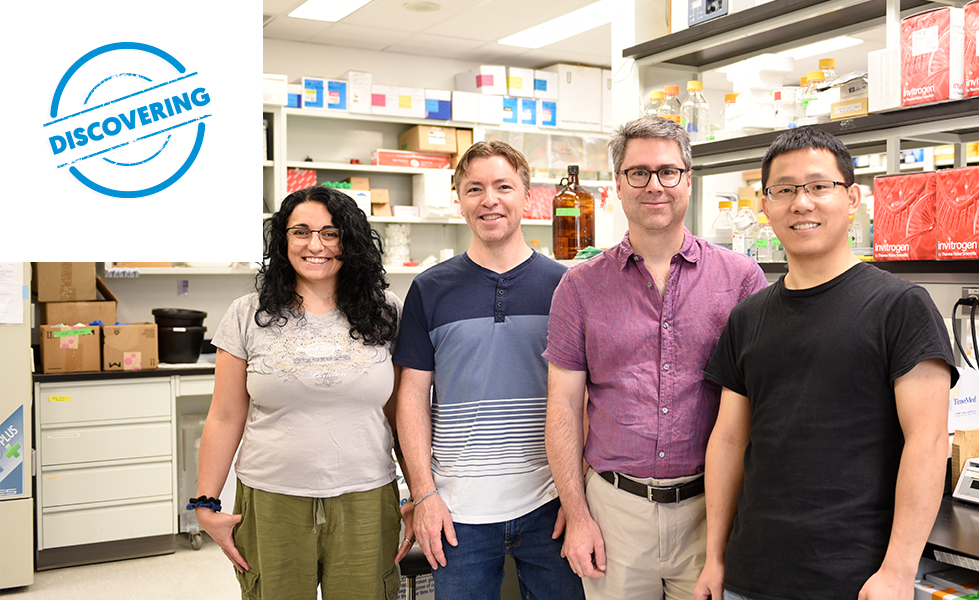
Left to right: Sara Calabretta, Kaiyue Zhang, Jean-Francois Michaud and Frédéric Charron
The team led by Dr. Frédéric Charron, Director of the Molecular Biology of Neuronal Development Research Unit at the Montreal Clinical Research Institute (IRCM), in collaboration with Dr. Greg Bashaw's team at the University of Pennsylvania, made a promising breakthrough in understanding the origins of the mysterious mirror movement disorder.
Mirror movement disorder is a poorly understood hereditary neurological condition that manifests itself in involuntary movements from an early age, mainly in the arms and hands. In affected individuals, the right hand involuntarily reproduces the movements of the left and vice versa, hence the name “mirror movements.” This disorder can cause pain in the arms during prolonged activities, and difficulties in performing tasks requiring left-right coordination.
“Mirror movement disorder disrupts the daily lives of affected individuals. Simple actions such as opening a bottle of water can become difficult, as well as playing a musical instrument,” notes Dr. Charron, Research Professor at the Université de Montréal and Adjunct Professor at McGill University.
Conducted by co-first authors Kaiyue Zhang, a doctoral student at the IRCM, and Dr. Karina Chaudhari, a doctoral student at the University of Pennsylvania, the study was published in the prestigious journal Science Signaling.
In Depth
The cellular mechanism behind mirror movements is a defect in a phenomenon known as axon guidance.
During embryonic development, neurons extend their axons, a long cellular cable that enables them to link specific areas of the body together, thus establishing nerve connections. The set of processes that control axon elongation and guide its navigation is called axon guidance. Among other things, axon guidance connects each neuron to its specific target. It is therefore crucial to the proper development of the nervous system.
Various guidance molecules direct axons to their targets, acting like signposts to guide axons to their destination. To do this, these guidance molecules must induce axon movement when they are detected by axons. This movement requires a complex molecular machinery that is still poorly understood. In this study, the researchers show that the machinery required for guidance is in fact the cytoskeleton. As its name suggests, the cytoskeleton is the skeleton of the cell, which enables movement by providing a bone-like rigidity.
Why It's Important
Understanding the mechanisms causing mirror movements is essential for the search of innovative treatments. The work of the Charron laboratory potentially paves the way to promising new targets for the treatment of mirror movement disorder, as well as other diseases resulting from nervous system development defects.
Collaborators
The teams of Dr. Myriam Srour of the Montreal Children's Hospital, Dr. Junmei Wang of the University of Pittsburgh, and Dr. Baoyu Chen of the Iowa State University also contributed to this work
Acknowledgements
This study was made possible with the support of the Canadian Institutes of Health Research (CIHR), the Neurobasis project of the Canada Foundation for Innovation (CFI), the Fonds de recherche du Québec - Santé (FRQS), the China Scholarship Council (CSC), the National Science Foundation (NSF), and the National Institutes of Health (NIH). Frédéric Charron holds the Canada Research Chair in Developmental Neurobiology.




